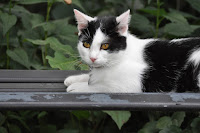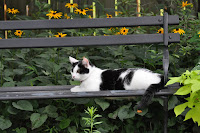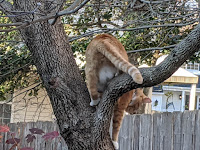About this book:
This is the first book in the eight book Burns Bannion series written between 1958 and 1967.
Kill Me in Tokyo was originally published in 1958 by Berkley Publishing Corp.
It has been republished in 2020 by Fiction Hunter Press in epub format and is available at
Google Play and
B&N Nook. Later books in this series are now available for Kindle as are other Fiction Hunter Press titles.
If you are a Kindle user and want to add this book, Fiction Hunter Press kindly makes their books DRM free which means you can easily convert them to the Kindle compatible format, mobi. I use
Calibre for my conversions. Note: if you've never uploaded a mobi book to Kindle, it appears in Docs not Books.
If you're on Facebook, you can follow
Fiction Hunter Press here. They are providing a great service so give them a shout-out.
Now on to the book:
My relationship with Burns Bannion spans 50 years. In the early 70s I was a SP4 clerk in an aviation unit (fixed wing reconnaissance) in Phu Bai Vietnam. Outside the mail room was a box where the USO or Red Cross or someone would drop off paperback books. Oddly, this is how I first read Lawrence Durrell's The Alexandria Quartet. Along with the occasional volumes of literature were some Burns Bannion books. My fellow soldiers and I loved these books and scoured every little Army exchange for one we hadn't read.
The things you remember don't always make sense, like old ad jingles, and for me Burns Bannion would occasionally surface. When the internet became a thing I searched but available copies came at extravagant prices. And then
Fiction Hunter Press came along! I discovered them through
Paperback Warrior. They now have four Burns Bannion series (8) out and three more in the works.
So what do I think, revisiting Burnsie after all these years? Are the books as enjoyable as the first time I encountered as a young soldier? Absolutely! To be honest, though, my enjoyment is probably colored by by nostalgia. They are still a lot of fun to read and I'll be buying every one that Fiction Hunters Press publishes.
I do need to add a little warning here These books are a product of the time. They are unapologetically men's pulp adventure stories and written for that readership. Bannion is a stereotypical, oversexed, American GI just out of the US Army in post-occupation Japan with a penchant for young Japanese women.
As Kill Me in Tokyo opens, Bannion, 30 years old, has just been discharged from the US Army in Japan. He finagled this by claiming he wanted to stay in Japan on a student visa to attend university on the G.I. Bill. Actually, Burns' goal is to pursue young Japanese women and to study karate.
Hoping to score with a stripper he's had his eye on, Bannion is at a bar when a very drunk, squat, red-faced American approaches him. The American, one Charles Echardt, is convinced Bannion is a detective named Bill because he looks like a detective and has a name that only a detective would have. Echardt wants to hire him to find a Japanese woman named Mitsuko with whom he's fallen love. With a wad of yen waving in front of him and being in need of the funds to get by, Bannion agrees and arranges to meet Echardt at his hotel the next day. And he and the stripper, Jade, do indeed hook up.
When Bannion arrives the next day to meet Echardt, he's dead, leaving a cryptic message for Bannion saying "You must find M. She knows who they are—" and a packet of more money. Burns decides to let someone else report the body and slips out of the hotel.
Bannion is determined to find the woman though his client is dead. He doesn't have much to go on: her name is Mitsuko which is of little help since Mitsuko is a common name —Bannion has 3 pages of Mitsukos in his litle black book and the night before Echardt attended a geisha party hosted by someone named Ito. Bannion soon finds out that this isn't a simple missing person case but something much larger, something that has him in mortal danger and his karate skills will be tested for him to survive.
The tone of this book is a playful take on the private detective genre and not to be taken seriously. When Echardt asks him his rates, Bannion quotes $25 dollars a day plus expenses which is what he remembers his favorite private detective (probably Philip Marlowe) charging. The next day he buys a trench coat because all good private detectives need a trench coat. Bannion also checks other private detective tropes: the PI code of ethics — you take a client's money, you solve the case even if the client is dead; wry/sarcastic, dry sense of humor; drinks —a lot; smokes; gets beaten up—a lot.
Besides needing to make money and avoid the notice of Japanese immigration, Bannion's two main passions are women and karate. In this first book he come across pervy with his lingering gazes on "lush" young bodies but these women are able to hold their own and Bannion gets pushed away, slapped, and told "no" quite a bit. He does succeed in his womanizing but these women are no pushovers.
Bannion's love of karate plays a large part in the books. The history of and training in karate plays a large role and Bannion takes it very seriously. Guns are not allowed and Banion needs his hands for self defense. The author repeats the myth that people skilled in martial arts are supposed to register his hands as deadly weapons but this was only true several years after the war when martial arts were banned. I suspect that there is considerable exaggeration in the portrayal of karate but the fight scenes are described very well with Bannion describing the karate moves he and his opponent are using. Chop-socky but still well done.
Most of the Japanese characters speak a broken English or Engrish. I wish I knew how accurate this was in post-occupation Japan but the author was an ex-pat living in Japan so I assume there might be some foundation even if exaggerated. I wasn't able to find anything about this in internet searches. One thing I did find is that there is a reason why "o" is added to the end of some English words by Japanese. A Japanese native speaker might add an "o' to the end of a word ending in a consonant.
See this Quora article. Also, when Bannion refers to a department store as a "departo" he isn't making fun of Japanese speech. Actually it is more of a linguistic rendering of the Japanese word. It is more commonly written as "depato".
All-in-all the Burns Bannion books are easy fun reads. The sex is of the fade-to-black variety whereas the karate fights are described is very bloody bone-breaking detail. If you want a good men's adventure story that doesn't take itself too seriously, the Burns Bannion books are what you need.
Here are a couple of links to other discussions of thee books:
Keywords: private detectives, Japan, hardboiled detectives, action adventure, thrillers

























